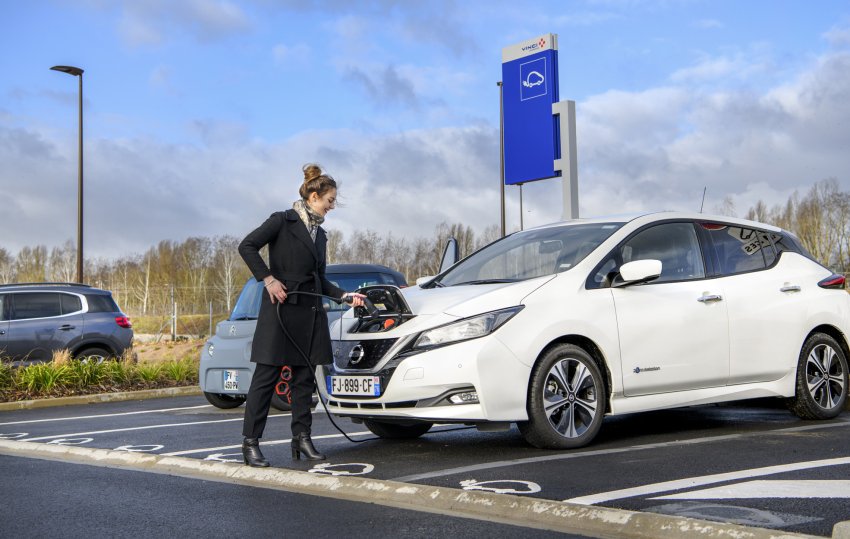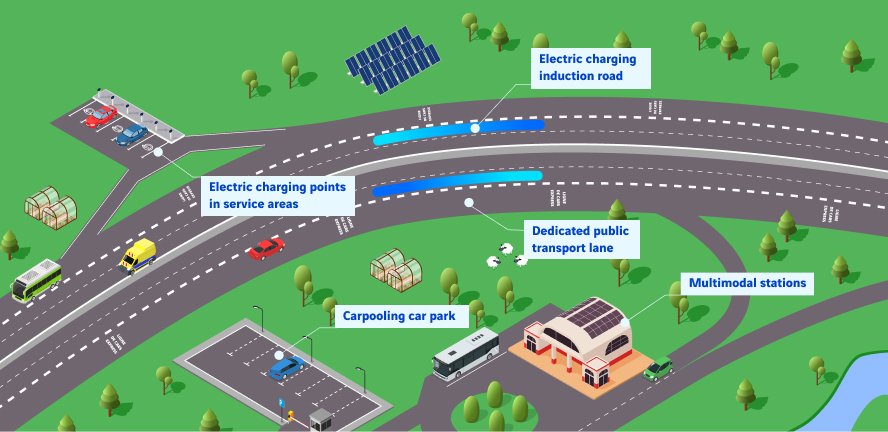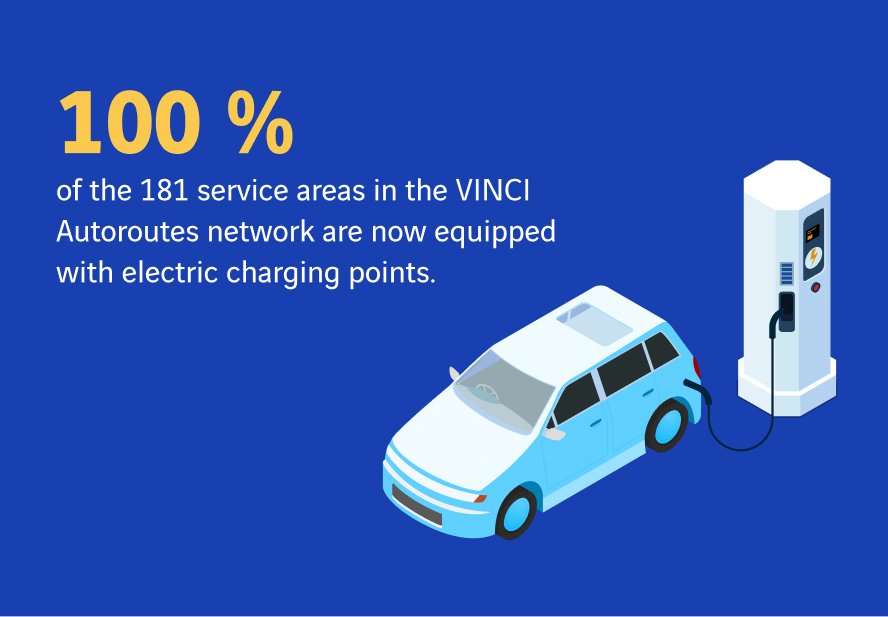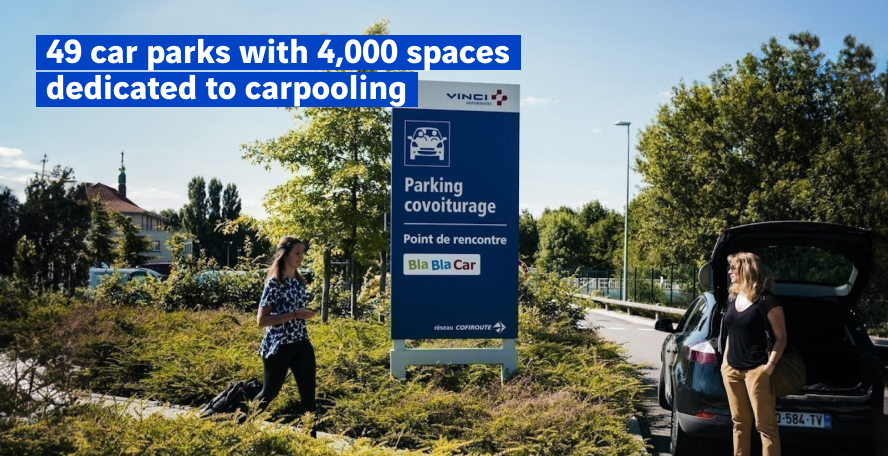
Decarbonising the motorway: what solutions?
Road transport is one of the highest emitters of greenhouse gases. Motorway travel alone accounts for 6% of French emissions. And yet, we cannot remove cars from the equation when we know that 75% of French people declared in 2021 that they use them for their everyday travel (1). Over and above replacement solutions, such as bicycles for short trips, we must roll out actions to reduce the carbon footprint of road usage. Numerous solutions exist or are being put in place. A quick look at them.
The main challenge for decarbonising road transport is to encourage replacement of combustion-engine vehicles by electric equivalents. In a legislative package presented in July 2021, the European Commission proposed that registration of combustion-engine cars should be banned starting in 2035 to meet its carbon neutrality commitments for 2050. In parallel, road users themselves are willing to modify their mobility practices to reduce their carbon footprint. According to the results of an Ipsos survey carried out for VINCI Autoroutes in 2021, 90% of French people would like to reduce the ecological impact of their daily travel and one out of five plans to buy an electric vehicle in the next five years.
As part of its actions for the climate, VINCI commits to reducing its direct emissions by converting its fleet to electric or biogas-powered vehicles, but also by supporting the change in road usages.
The motorway welcome decarbonized mobility
Charging stations and the induction road
More than 160,000 electric vehicles (including rechargeable hybrids) were registered in 2021, i.e. one in five vehicles in France. According to carmakers, the electric fleet could rise from 200,000 vehicles in 2019 to 5 million in 2028. This exponential increase needs to be accompanied.
The Low-Carbon Motorway programme launched in 2019 with signature of a first partnership convention between VINCI Autoroutes and the South region aims to increase the density of the charging station network, first in the service areas of the motorway network and subsequently on secondary roads.
‘Successfully meeting this immense challenge to decarbonise motorway traffic requires a huge partnership effort,’ says Christophe Hug, Executive Vice-President of VINCI Autoroutes. Through their co-venture Easy Charge, VINCI Autoroutes and VINCI Energies offer turnkey projects to develop public electric vehicle charging infrastructure in France, which includes financing rapid-charging stations.
The result: at end July 2021, more than 250 electric charging points were deployed on service areas in the VINCI Autoroutes network, with 144 of them offering high-power points allowing drivers to charge their vehicles in a much shorter time. By 2023, VINCI Autoroutes aims to equip all its service areas with electric charging facilities.

Other solutions are being trialled. One of the most promising is the induction road. The concept consists of transferring energy by electromagnetic induction thanks to a coil placed under the road surface for contactless recharging of travelling vehicles. The Israeli startup ElectReon signed a strategic partnership agreement with VINCI Construction in 2020 to trial induction roads in France, Belgium and Germany looking to 2025.
For instance, a pilot project is being rolled out in the city of Karlsruhe on behalf of the energy group EnBW. The goal is to equip 600 metres of public roads for dynamic charging of electric vehicles, in particular the buses of the city’s transport company. ‘By allowing any vehicle – car, truck, bus – to charge up while driving, induction will remove the main barriers holding back the real industrial take-off of electric mobility,’ says Lionel Grin, innovation director at VINCI Construction.
Speed up development of shared mobility
Over and above electrification of the vehicle fleet, decarbonising the motorway also requires a change in automobile usages, and, notably, better occupancy of vehicles to avoid the solo-driver syndrome. The occupancy rate in the Paris region is just 1.2 people per car, which leads to congestion and pollution. To counter this problem, VINCI is developing infrastructure and partnerships to increase car-sharing. Some 37 parking areas with a total of 3,000 parking spaces dedicated to car-sharing were in service in 2021, and some 30 others are in the pipeline.
Lastly, to reduce congestion, VINCI Autoroutes is supporting creation of infrastructure dedicated to circulation of public transport on its motorway network. On the A10 motorway in the Yvelines department, the Longvilliers multimodal car park inaugurated end 2020 offers 257 free parking spaces to motorists using car-sharing arrangements or switching to one of the five bus lines taking them to the Massy-Palaiseau RER (suburban express) station.
Most viewed
Explore more
Words from researchers: let's fight stereotypes!
Charlotte, a research fellow at École des Mines, and Erwan, a university professor and researcher at AgroParisTech, talk…
Fondation VINCI pour la Cité: opening the door to others is another way of reaching out!
With some 1.3 million organisations and 2 million employees, France can lay claim to a dynamic network of associations…
Sea water desalination: a solution for turning the tide on the water scarcity crisis?
As water shortages continue causing havoc in a growing number of regions around the world, an age-old idea is experiencing a…





